This fabulous flourless cake is one of my favorite desserts of all time. Perfumed with blood orange and a hint of Middle Eastern spice, it’s definitely dessert but not overpoweringly sweet. With a firm, browned exterior, a center that’s almost pudding-like, and a topping of rich pomegranate honey and juicy orange slices, the variety of textures is really something special. It happens to be kosher for Passover which is why I’ve chosen to share it with you this week, but it’s worthy of a place in your repertoire year-round (or whenever you can get your hands on some good, fresh oranges). Don’t limit yourself to dinner with this dessert – it makes a gorgeous addition to the brunch table as well.
You’ll find various versions of this almond/orange/egg confection floating around in cyberspace, but the original recipe was created by the inimitable Claudia Roden, who happens to be one of my culinary heroes. I love her version, but I’ve tweaked and updated the recipe to make it my own. I’ve swapped in blood oranges for standard, sweetened it with delicious Medjool dates instead of sugar, added a couple of spices, and created an easy topping that elevates this simple cake to a level worthy of any holiday or special occasion.
I absolutely love using dates and date syrup in my baking and cooking. Since date and orange is a classic flavor pairing, this cake is the perfect excuse to use dates instead of sugar. Though dates come in numerous varieties, Medjool and Deglet Noor are the most widely available ones. I prefer Medjools for their meaty texture and complex, sweet flavor that falls somewhere between honey and caramel. Deglet Noors are drier and chewier, and while great in their own right, not my go-to for something like this. Dates are very hardy and will last in the refrigerator in an airtight container for up to six months, so when I find good ones I stock up on them. I always buy them whole and remove the pits as needed so the dates stay plump and fresh until I’m ready to use them, because I find that once they’re pitted they dry out faster. Since they’re so moist and sticky, they can be challenging to dice or slice if you want to add bits of them to whatever you’re making (pro tip: use kitchen shears). Fortunately they’re getting turned into a chunky paste for this cake so you won’t even need to cut them, just tear them open with your fingers to pull out the pits.
As you’ve learned by now I have a thing for blood oranges, and as long as I can find them I’m going to use them! Most versions of this cake call for standard oranges, so if you don’t have access to blood oranges go ahead and use the regular navels and the cake will still be wonderful. It’s a straight swap by weight, but not by number since blood oranges tend to run smaller. Regardless of variety, the oranges get a truly unique treatment for this recipe. You simmer them whole, then toss the unpeeled oranges into a food processor or blender and turn them into a thick, creamy puree. Yes, the whole thing – flesh, juice, pith, peel – all of it gets pureed. (Not the seeds though, those are particularly bitter and mealy.) Simmering the oranges for the full time listed in the recupe is important because it gives the naturally-occurring pectin in the skin a chance to gel, which contributes to the thick and creamy texture of the puree. I’ve seen comments around the Web claiming that you can take a shortcut and microwave the oranges, but I don’t believe it will yield the same texture, so try that one at your own risk. I haven’t attempted it myself – I personally use my microwave mostly for storage.
We’ve got dates and blood oranges for flavor and moisture, plus a touch of ginger and cardamom to make things more interesting. But what makes up the body and structure of the cake? Finely ground almonds or almond meal, and eggs. Before anyone asks, no, I haven’t attempted this cake with an egg substitute, and I wouldn’t. The eggs account for quite a bit of volume so you’d need to rework the entire formula and add protein and fat. I’ll put this on my never-ending list of things to veganize someday, but for now, the eggs stay. Need to substitute another nut for the almond? Now that’s a workable swap. I recommend pistachio or walnut meal.
So the first step here is to get a medium-sized pot of water simmering on the stove – you’ll want to fill it about two thirds of the way. While the water is heating, tear open the dates, get rid of the pits, and put the dates in the bowl of a food processor or the pitcher of a high-powered blender. (If using a blender, be sure yours is up to the task. This will be a thick and dense batter that requires a powerful motor and a sufficiently large pitcher – at least 2 liters or 8 cups – to accommodate the volume.) Once the water is simmering, pour 130ml/½ cup + 2 teaspoons of it over the dates and let them soak for about 10 minutes, then pulse into a chunky paste.
The dates won’t turn into a smooth puree. You’re simply looking for them to break down and absorb the water. Now add the oranges to the pot of water, cover it with a lid, and let them simmer for two hours. It’s okay if some of the skins split while the oranges are cooking. Happens to me too!
See? A couple of mine split while they were simmering. No biggie. Drain the oranges and let them cool enough so you can handle them – slicing them in half will speed the cooling process. While they’re cooling, preheat the oven to 350°F and prepare your cake pan by greasing the sides and bottom with oil and lining the bottom with a circle of parchment. Yes, use both. Cake batter that contains a lot of egg tends to stick to the pan pretty stubbornly, so the parchment is added insurance that you’ll be able to get it out.
Once the oranges have cooled a bit, cut them into eighths and feel around for seeds. Remove and discard any seeds you find.
Toss the oranges – peel and all – in with the date paste you made earlier, and process until thick, creamy, and smooth. You should have somewhere in the neighborhood of 870ml/3 ½ cups of puree at this point (about 2 ⅔ cups/660ml of that is orange puree, and the remaining 210 ml/¾ cup + 2 Tbsp is date paste, just FYI).
Crack the eggs into a medium bowl and whisk them just until they’re relatively broken down and uniform. Add them to the food processor or blender, give it a quick pulse, then add the remaining ingredients. Process until the batter is thick and uniform.
Use a spatula to scrape the batter into your prepared pan. See how thick and dense it is?
Smooth out the surface a bit with your spatula, and give the pan a few solid whacks against the counter to knock out any trapped air bubbles. Bake the cake for 50-60 minutes or until the top is golden, the sides begin to pull away from the pan, and a tester or toothpick inserted in the center comes out with a few moist crumbs clinging to it. I recommend testing at 50 minutes, and letting it go for another 5-10 minutes only if it still seems pretty wet in the center – even when fully baked this cake will be very moist in the center. Don’t forget to rotate the pan halfway through to ensure that the cake bakes evenly.
Here’s how it will look when it’s done. Assuming you greased the pan, the cake should pull away from the sides on its own. Those cracks? Embrace them. The pomegranate honey will soak into those nooks and crannies when you brush it on, and once you lay the orange slices over it you’ll have a wonderfully textured surface of sticky, craggy deliciousness. Plus, even though the center of the cake looks domed right now, it will sink a bit as it cools and the cracks will tighten somewhat as the surface shrinks. I just realized I neglected to take a photo of the side of the cake after I turned it out of the pan. Heads up that it will look very browned, so don’t panic if it seems unexpectedly dark. That’s from the dates. It’s all good! Let the cake cool for at least 30 minutes before you even think about removing it from the pan because there’s a lot of moisture in there and it needs time to set. While you’re waiting, do some dishes and prepare the components for the topping.
I have a number of recipes here on the blog that call for slices or supremes of citrus, but I’ve never really explained or demostrated how to prep the fruit to do that. Today’s your lucky day! I took a couple of photos to help with the explanation. It’s pretty simple.
Wash and dry the oranges, and slice off an even layer from the top and bottom of each one. Now both ends are flat so the oranges will stand upright and stable on your cutting board, and you’ve exposed that gorgeous flesh inside.
Get a sharp paring knife, and work it evenly down and around the sides of each orange, trimming off all the orange peel and white pith as you go. You want to sculpt as close as possible to where the flesh meets the pith, so you’re not cutting away too much of the edible portion and you leave the natural rounded globe shape of the orange intact. After you’ve cut off the majority of peel and pith you can go back and trim away any little white bits you may have left behind.
Once you’ve trimmed off all the peel and pith, cut the oranges into thin slices (anywhere from ⅛ to ¼ inch thick). I thought this would be a good time to stress the importance of keeping your knives sharp. You can see in this photo that I sliced cleanly through the seeds when I was cutting the oranges. If you’re cutting citrus and you notice that your knife is slipping off the seeds instead of slicing through them, the blade is too dull. A sharp knife is much safer than a dull one, and it will make your life in the kitchen much easier.
Use the tip of your knife to remove and discard any seeds that are stuck in those beautiful orange slices, and set them aside until you’re ready to garnish and serve the cake. (If you want to prep the slices ahead of time they’ll keep in an airtight container in the fridge for a couple of days.)
The pomegranate honey is the last step. I know it sounds fancy and exotic, but it’s a simple reduction of honey and bottled pomegranate juice with a pinch of salt. Add the ingredients to a small saucepan over medium heat, whisk to dissolve the salt and honey, and simmer until the liquid is thickened slightly and reduced to a quarter-cup. Don’t stray too far from the pot while this is cooking, as it tends to bubble and foam up and you don’t want a boil-over on your stove. Stir it occasionally and adjust the flame as needed to keep it at a tame simmer. Once reduced, pour the syrup into a heat-proof bowl and let it cool for a few minutes to give it a chance to thicken up more before you brush it onto the cake.
Transfer your cake to a serving platter or plate, and use a pastry brush to dab some of the syrup all over the surface. You won’t use all the syrup, just enough to get a nice, glossy coating on there. Reserve the leftover syrup for drizzling over individual slices.
Be generous enough to let it pool up a bit in spots – it will soak into the cake at different rates and depths, and you’ll see beautiful irregular shading and streaks inside the cake when you cut into it.
Let the brushed cake sit for a few minutes, then arrange your orange slices over the top however you’d like. I just scatter them around randomly.
Now cut yourself a slice, grab a fork, and dig in!
Isn’t it beautiful? You can see the marbled effect inside from the pomegranate honey. You won’t believe the texture of this cake – it’s probably not like anything you’ve had before, and I mean that in the best way possible.
How can anyone resist that? And why would you want to? Go bake this cake, and if you’re celebrating Passover I wish you chag sameach and a zissen Pesach.
- For Cake
- 227 grams ( ½ lb) pitted dates
- Water
- 548 grams (4 medium or 5 small) blood oranges
- 6 large eggs
- 260 grams (2 ⅓ cups) finely ground almonds or almond meal*
- 1 tsp baking powder
- ½ tsp salt
- 1 Tbsp grated fresh ginger (or ¼ tsp ground ginger)
- 1 tsp vanilla extract or paste, or seeds scraped from 1 vanilla bean
- ½ tsp ground cardamom
- For Garnish
- 2 medium or 3 small blood oranges
- 120 ml (½ cup) pomegranate juice
- 60 ml (¼ cup) honey
- Pinch salt
- Add dates to bowl of food processor or pitcher of high-powered blender.
- Scrub the oranges thoroughly - preferably with the soft bristles of a vegetable brush if you have one - and set aside.
- Fill a medium saucepan with water about two thirds of the way and bring to a boil. Reduce to simmer, measure out 130ml (½ cup + 2 teaspoons) of the hot water, and pour it over the dates. (They won’t be submerged or drenched, it’s just enough water to soften them.) Let dates soak for about 10 minutes, then process into a chunky paste and leave it in the processor or blender.
- Add the whole oranges to the saucepan, cover with a lid, and cook for 90 minutes. Remove the oranges from the water with tongs or a slotted spoon and set aside until cool enough to handle.
- Preheat the oven to 350°F. Grease a 9-inch springform pan (I use coconut oil), and line the pan with a parchment circle.
- When oranges are cool enough to handle, cut into eighths. Remove and discard any large seeds, and add the oranges - peel and all - to the date paste. Puree until smooth. (Note: you can boil and puree the oranges in advance, and refrigerate for up to 3 days or freeze for several months.)
- Crack the eggs into a medium bowl and whisk briefly to break down. Add eggs to orange-date puree and pulse briefly to mix in. Add all remaining ingredients and process until batter is uniform. It will be very thick.
- Scrape batter into prepared pan and bake for 50-60 minutes (check at 50), rotating halfway through, until sides pull away from pan and a cake tester or toothpick inserted in the center comes out with a few moist crumbs.
- Set pan on a rack and allow cake to cool completely before turning out.
- While cake is cooling, prepare garnish: Slice off tops and bottoms of oranges so ends are flat. Stand oranges upright on a cutting board, and use a sharp paring knife to trim off all peel and white pith, working your way down and around the fruit. Cut oranges into thin slices (⅛ to ¼ inch thick) and set aside.
- Whisk together pomegranate juice, honey, and salt in a small saucepan over medium heat, and bring to simmer. Cook liquid until reduced by two thirds (you should end up with 60ml or ¼ cup). Remove from heat and let cool for 5 minutes until thickened and syrupy.
- Use a pastry brush to dab some of the syrup over the surface of the cake, just to coat evenly. Reserve remaining syrup to serve with cake.
- Arrange orange slices in a decorative pattern over top, cut cake into wedges, and serve.
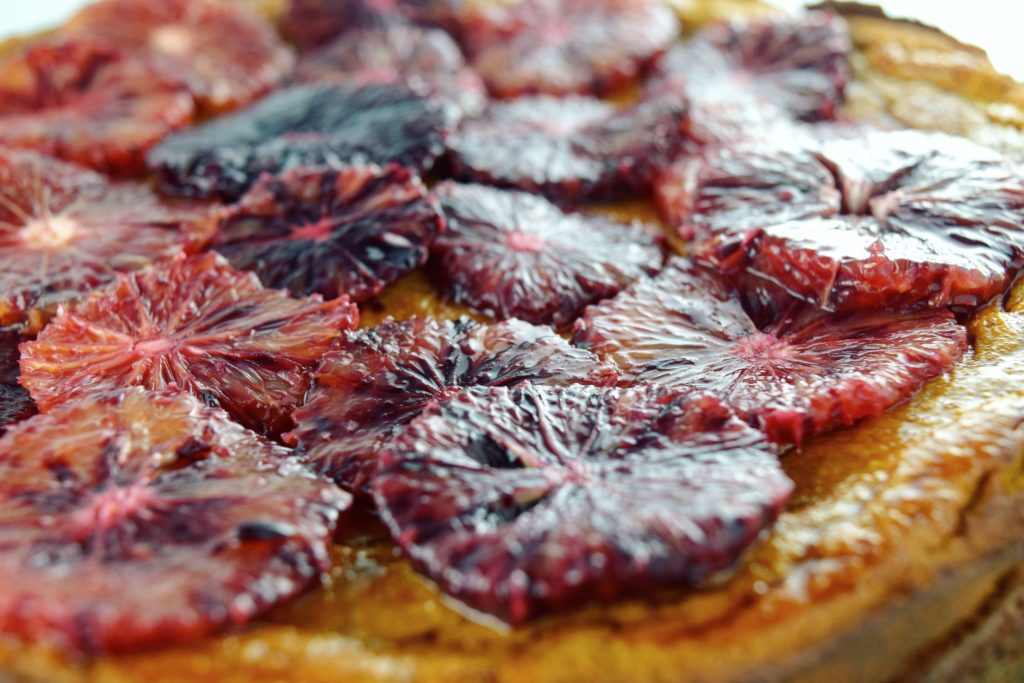
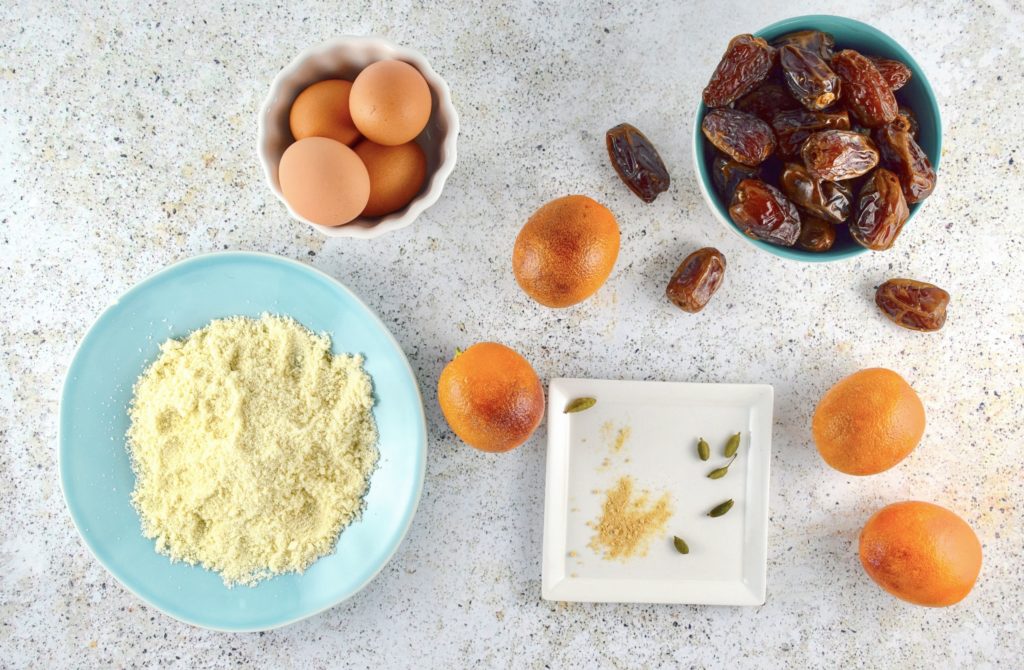
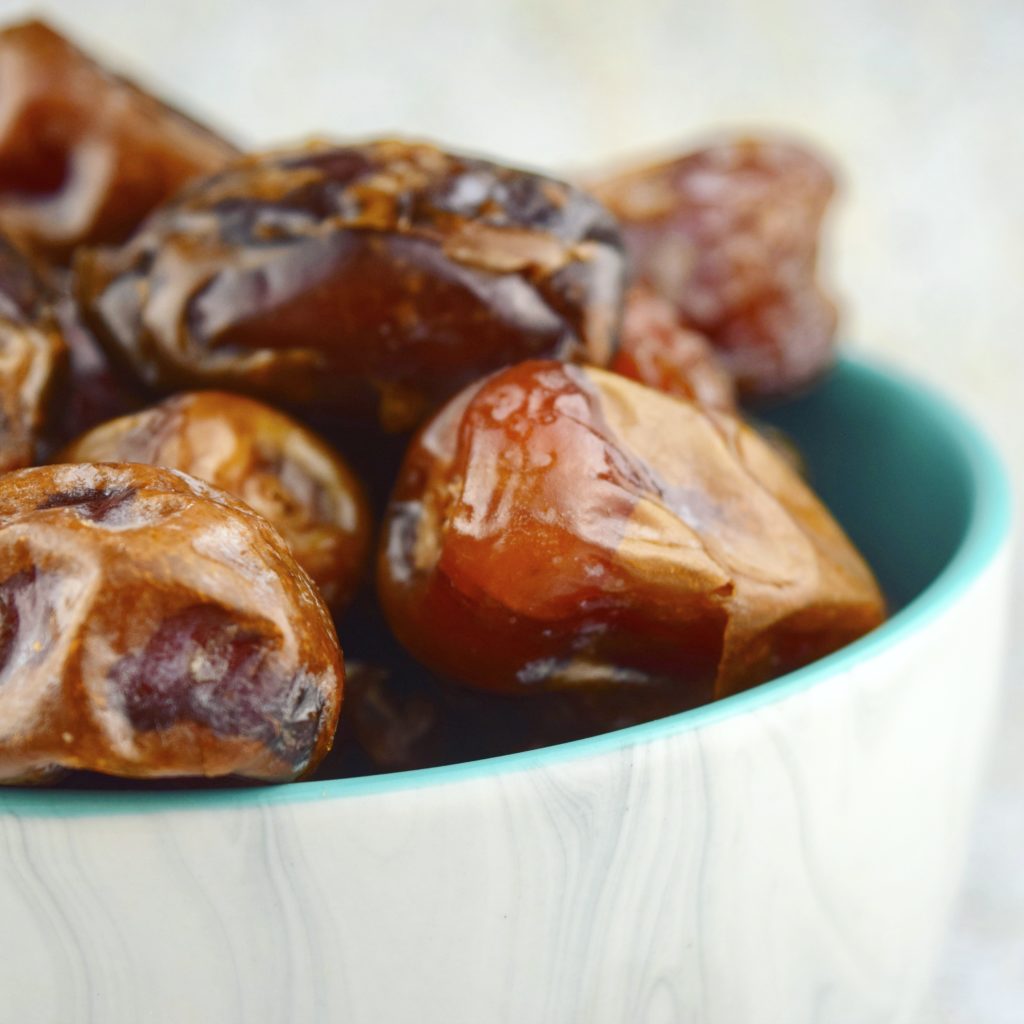
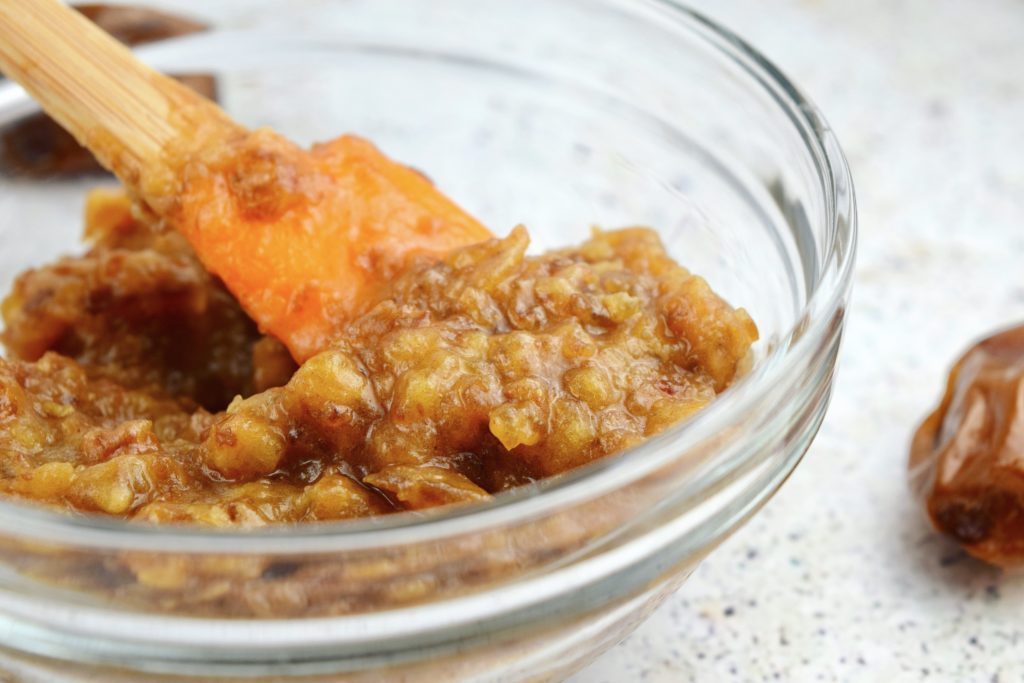
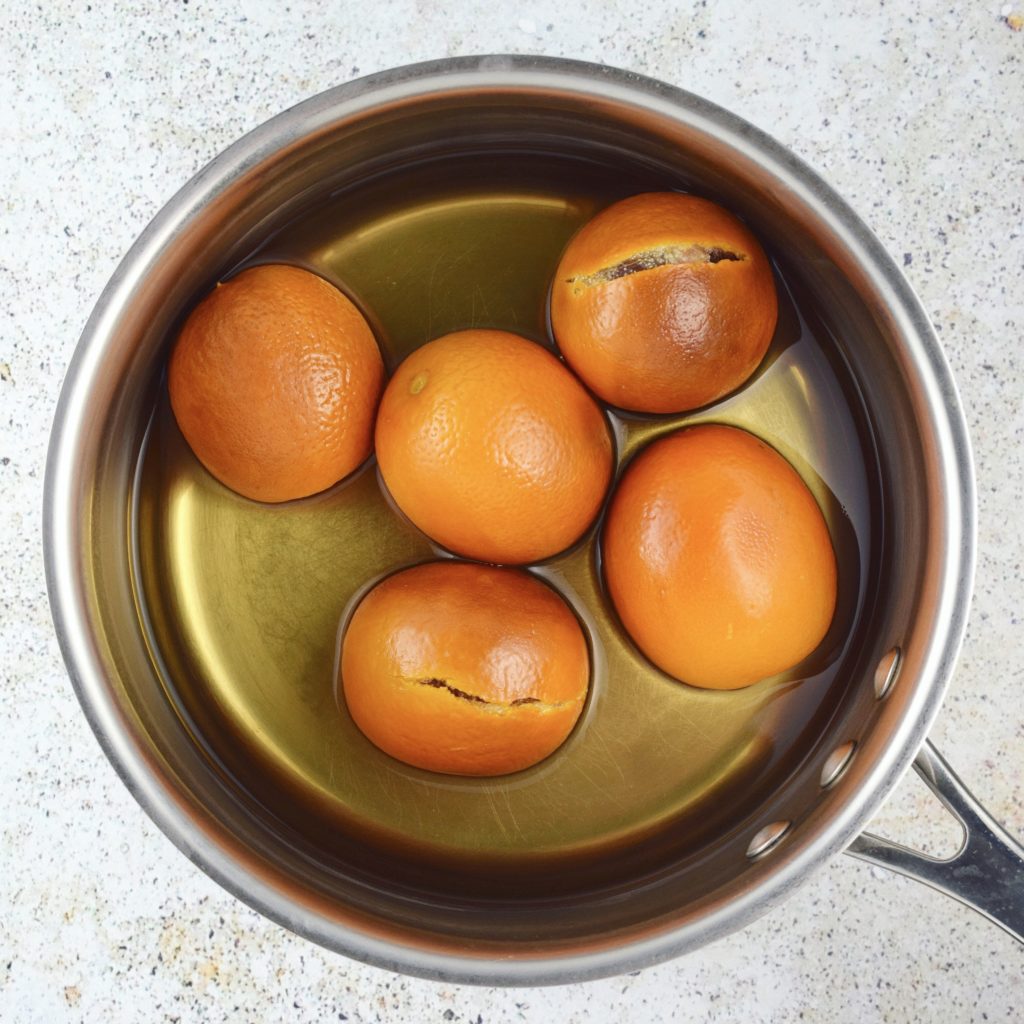
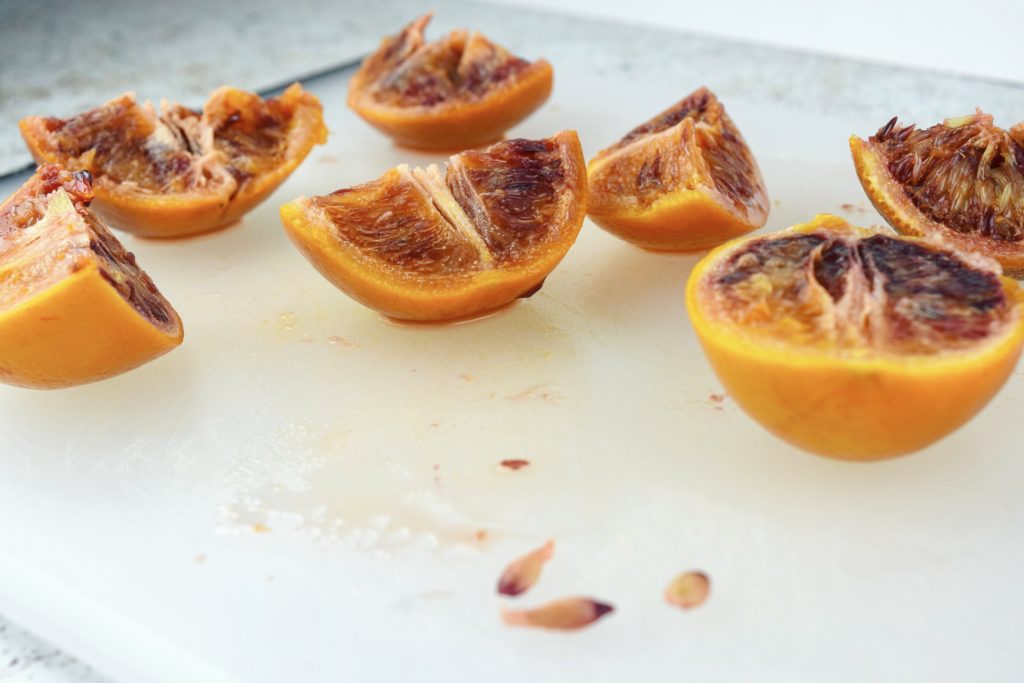
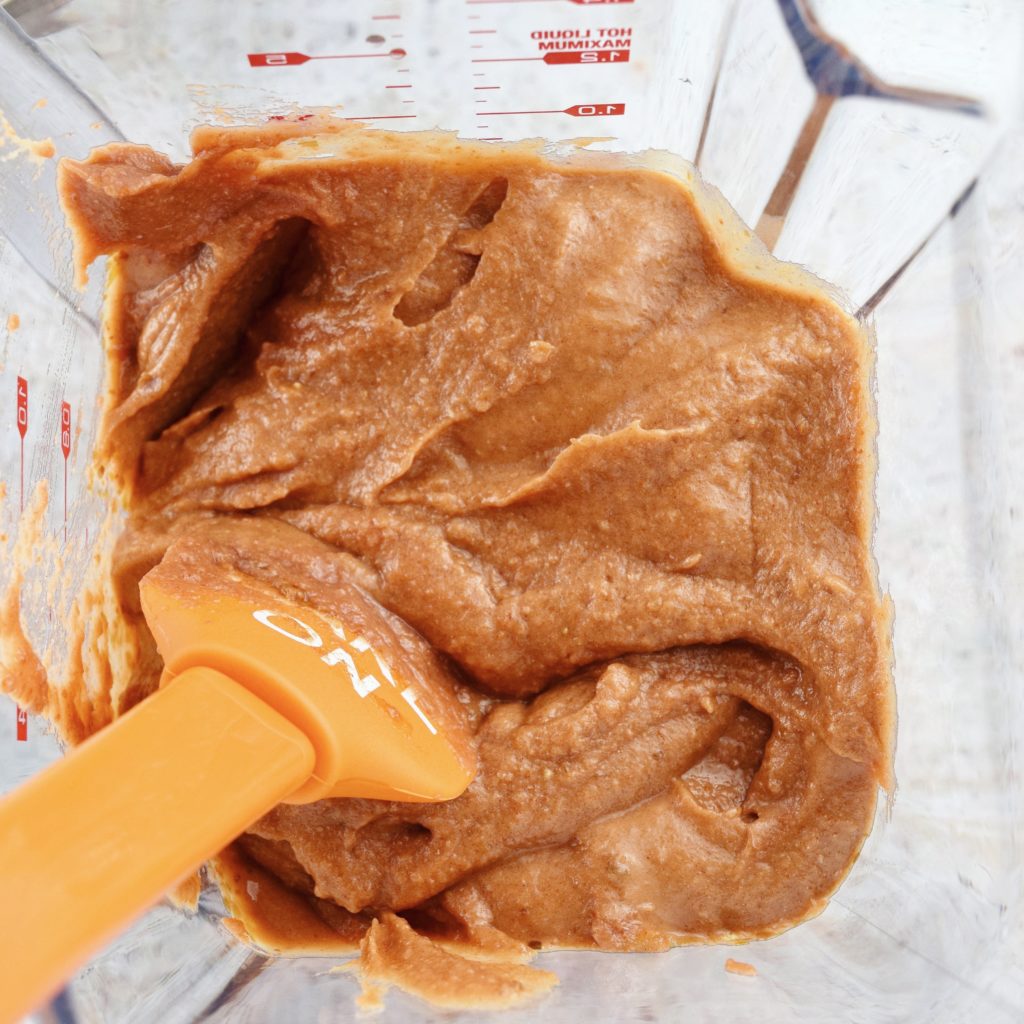
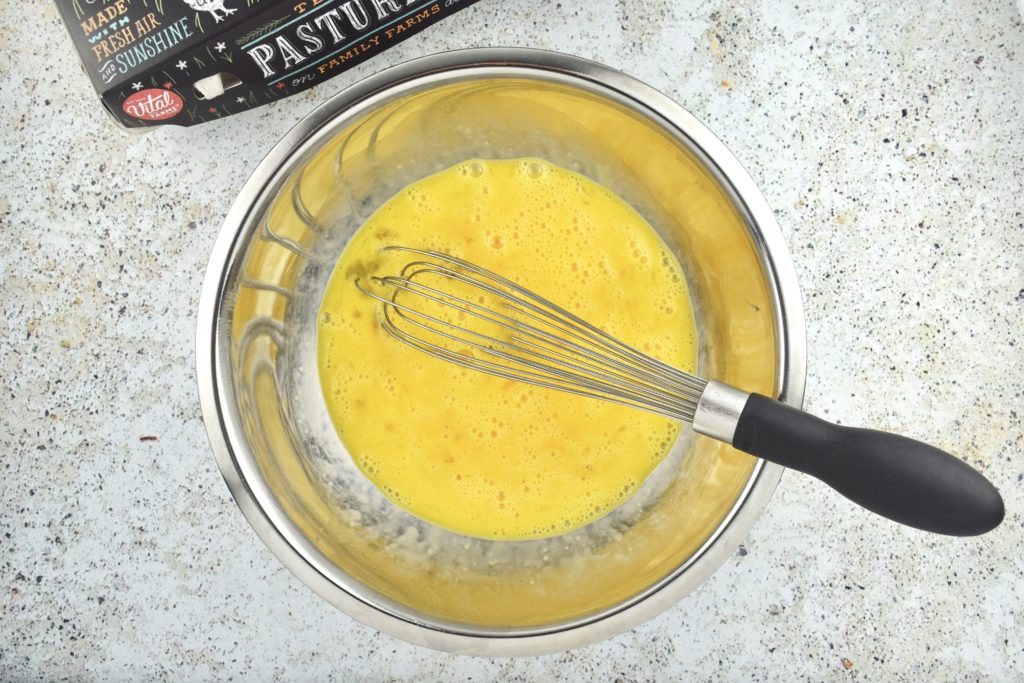
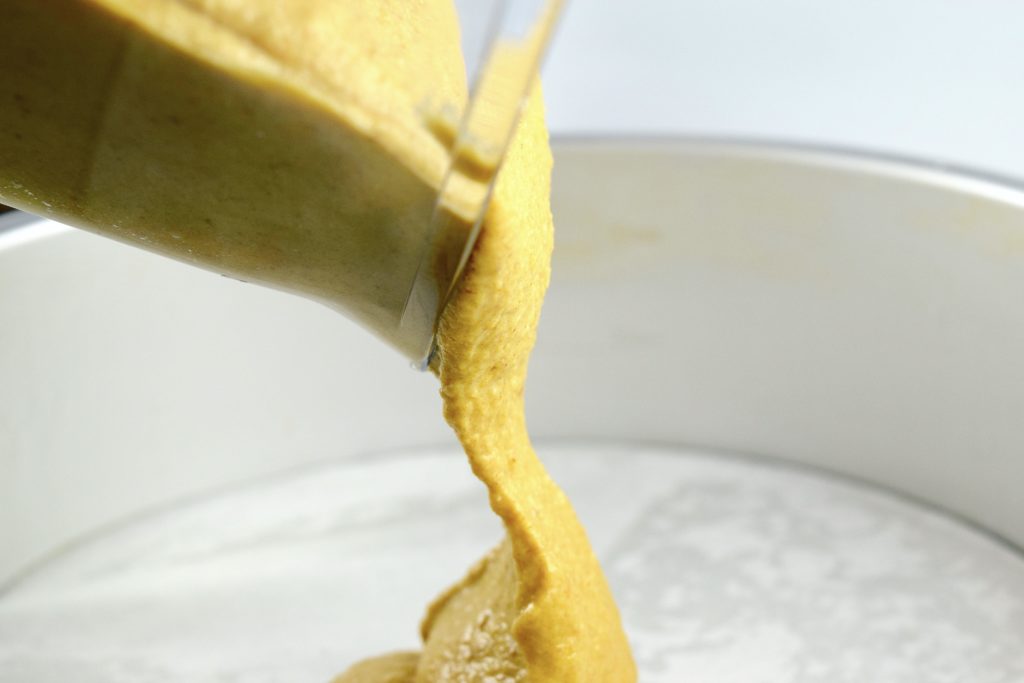
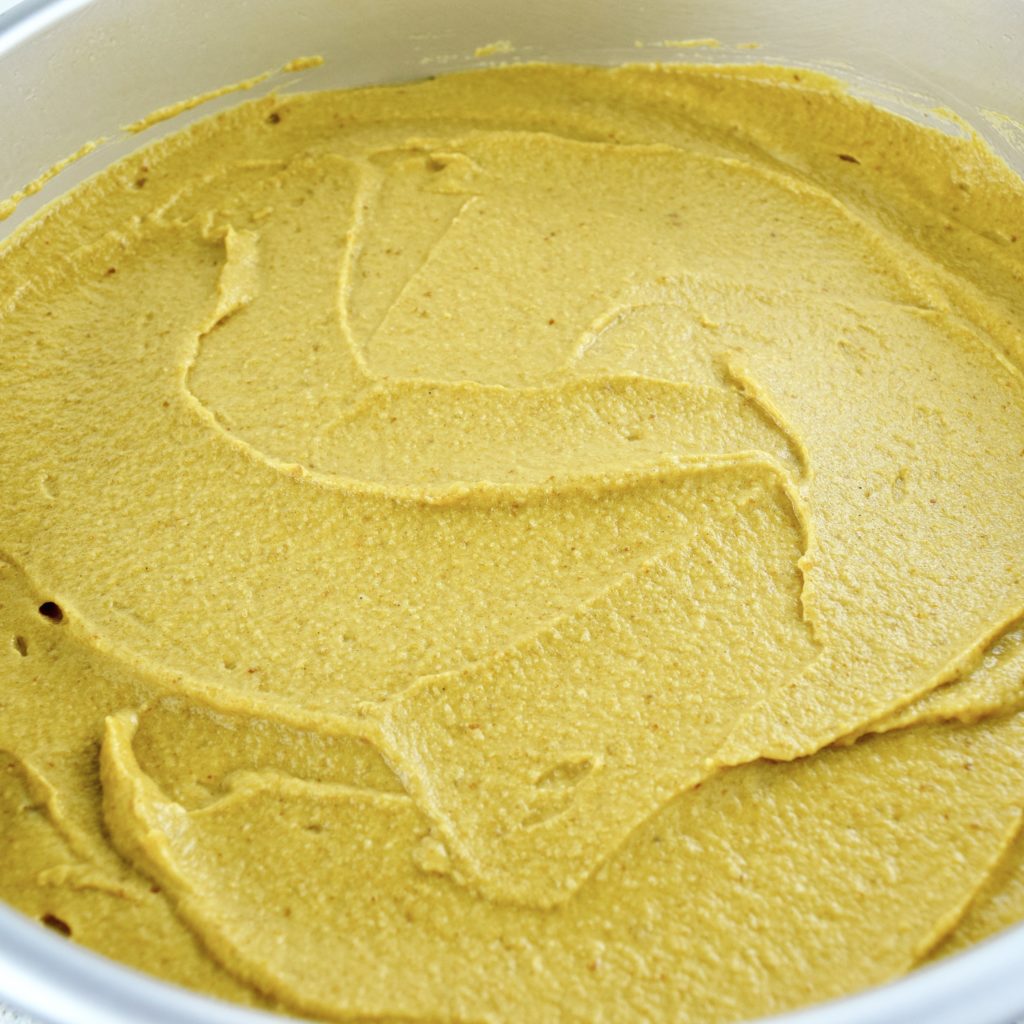
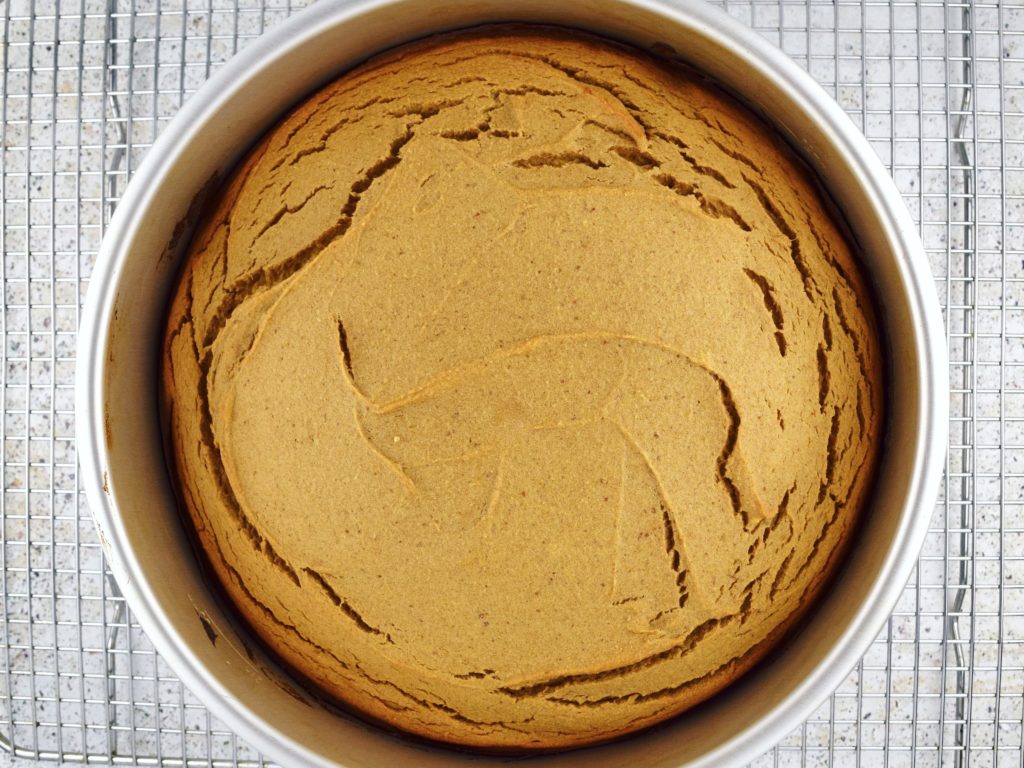
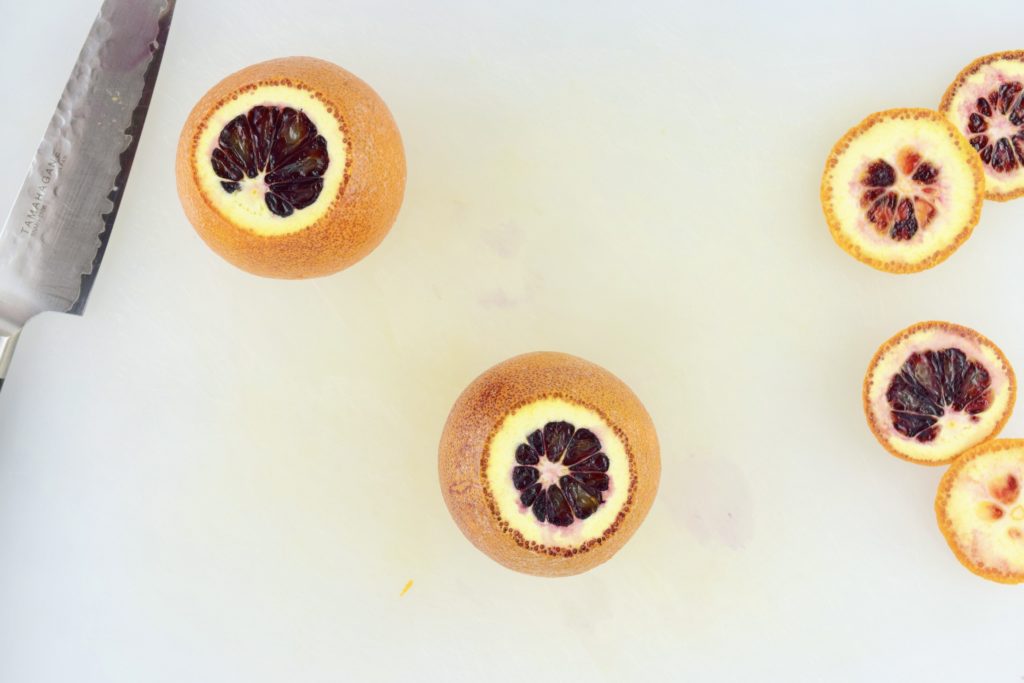
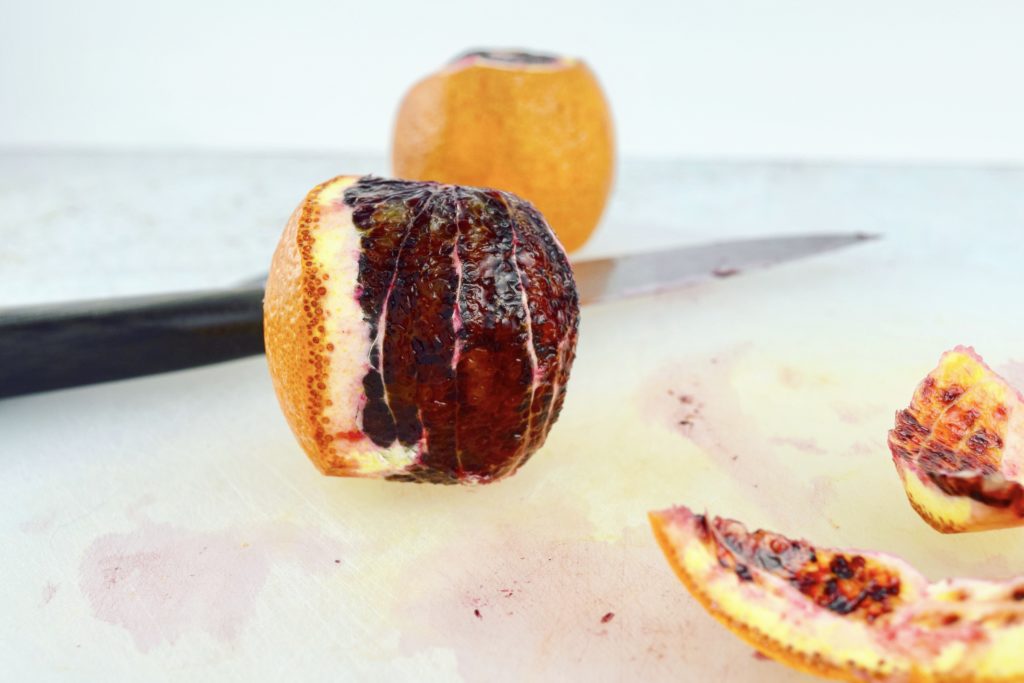
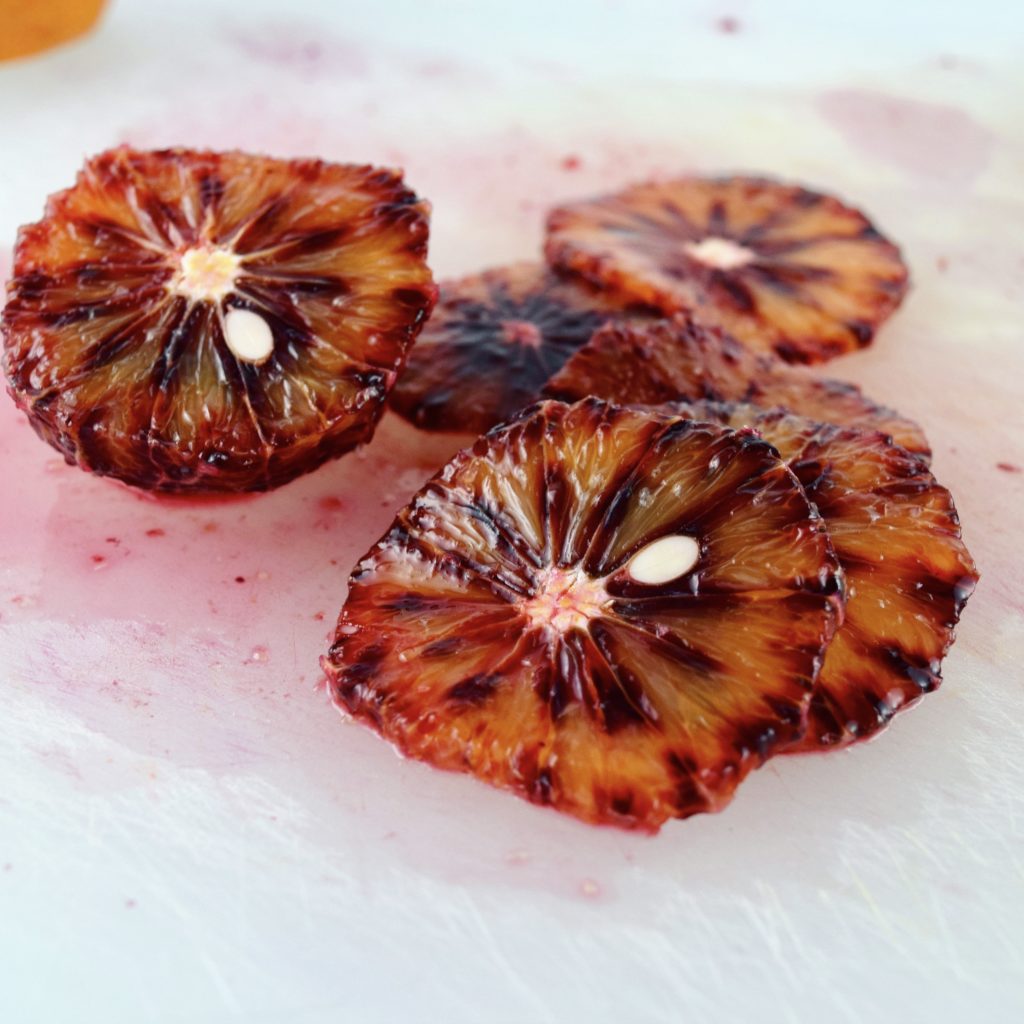
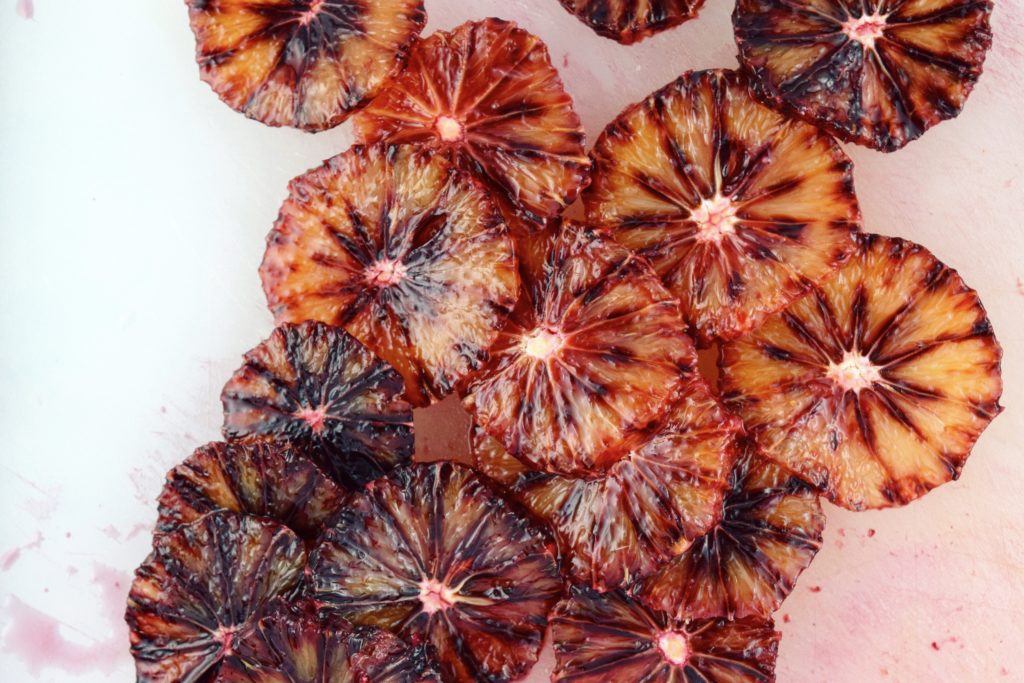
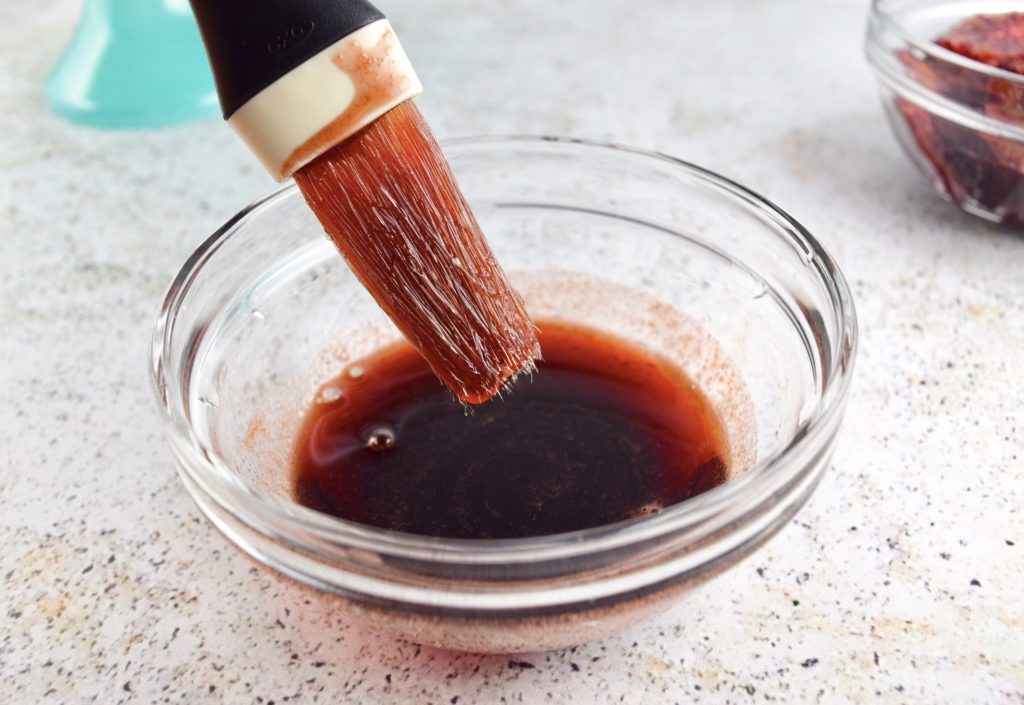
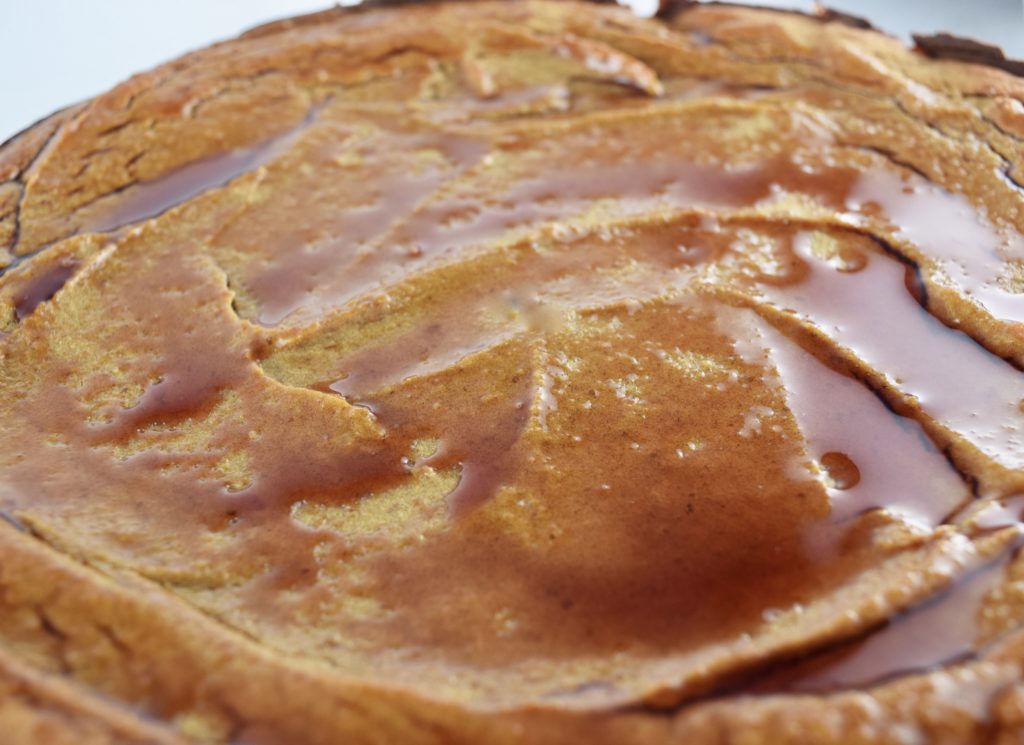
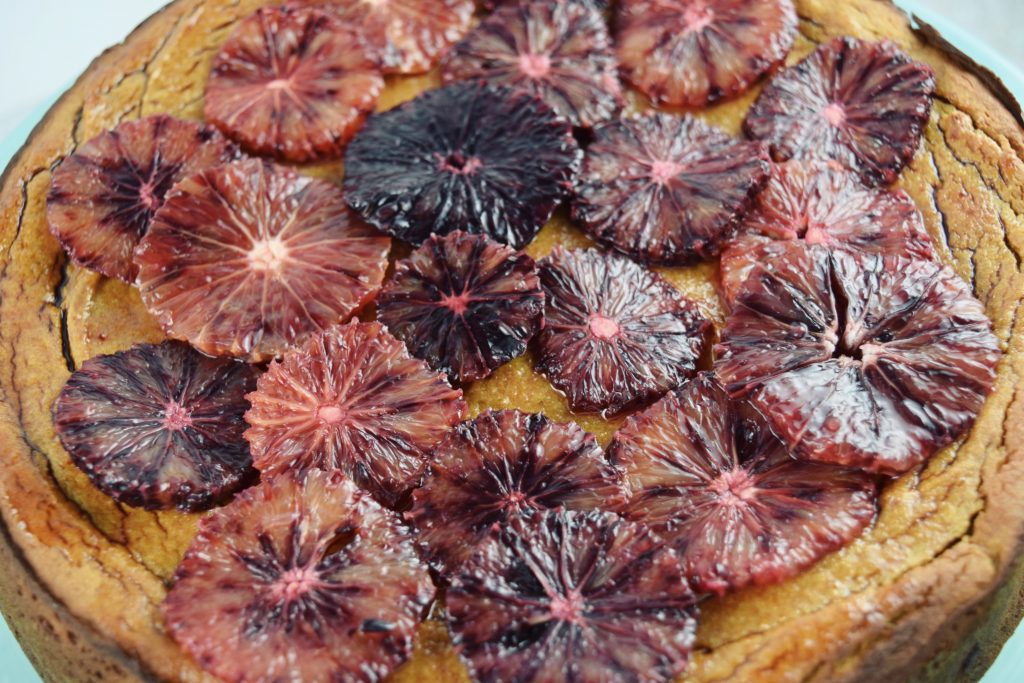
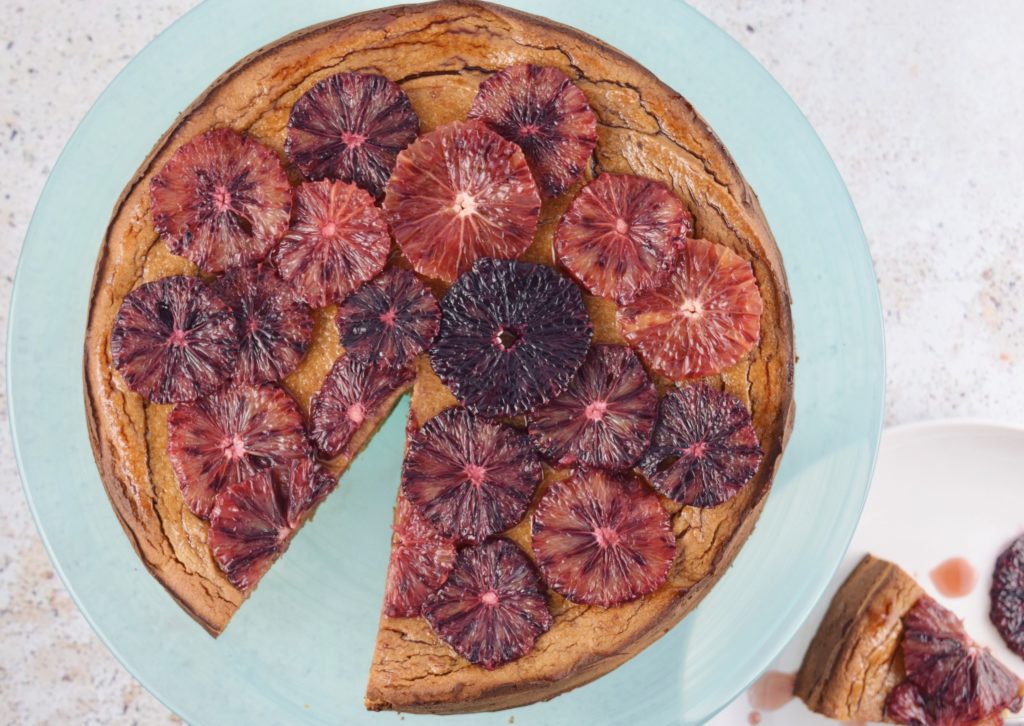
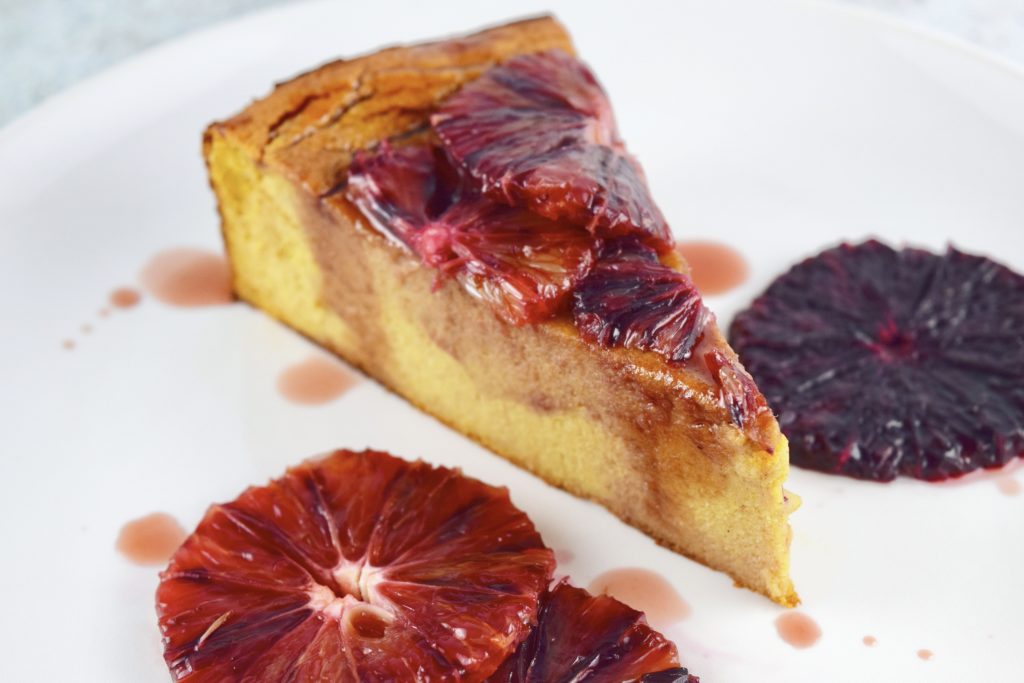
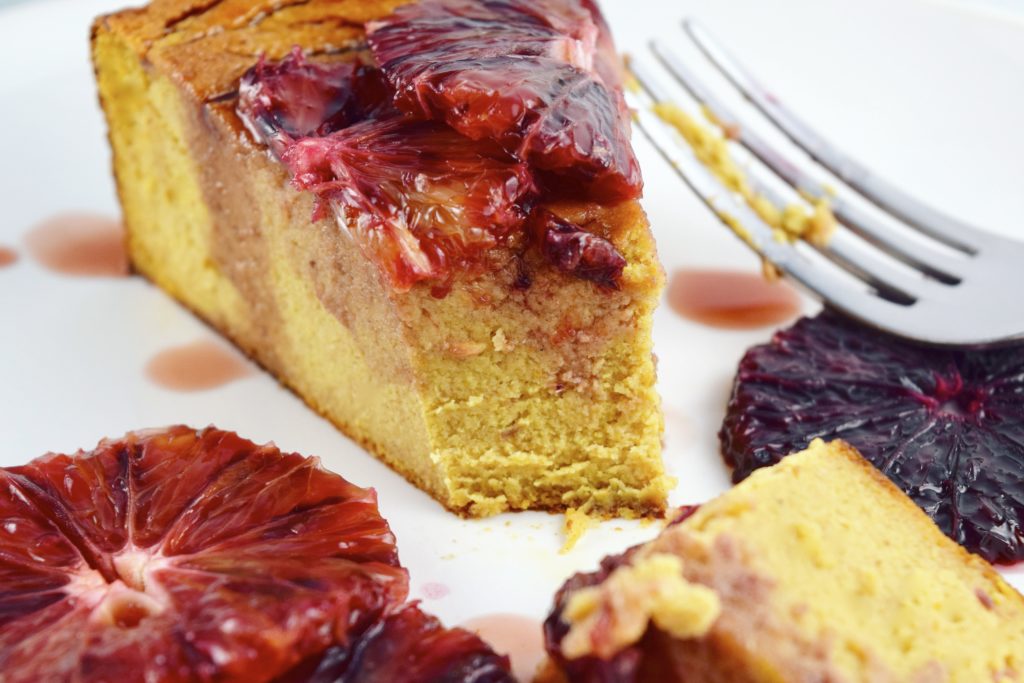
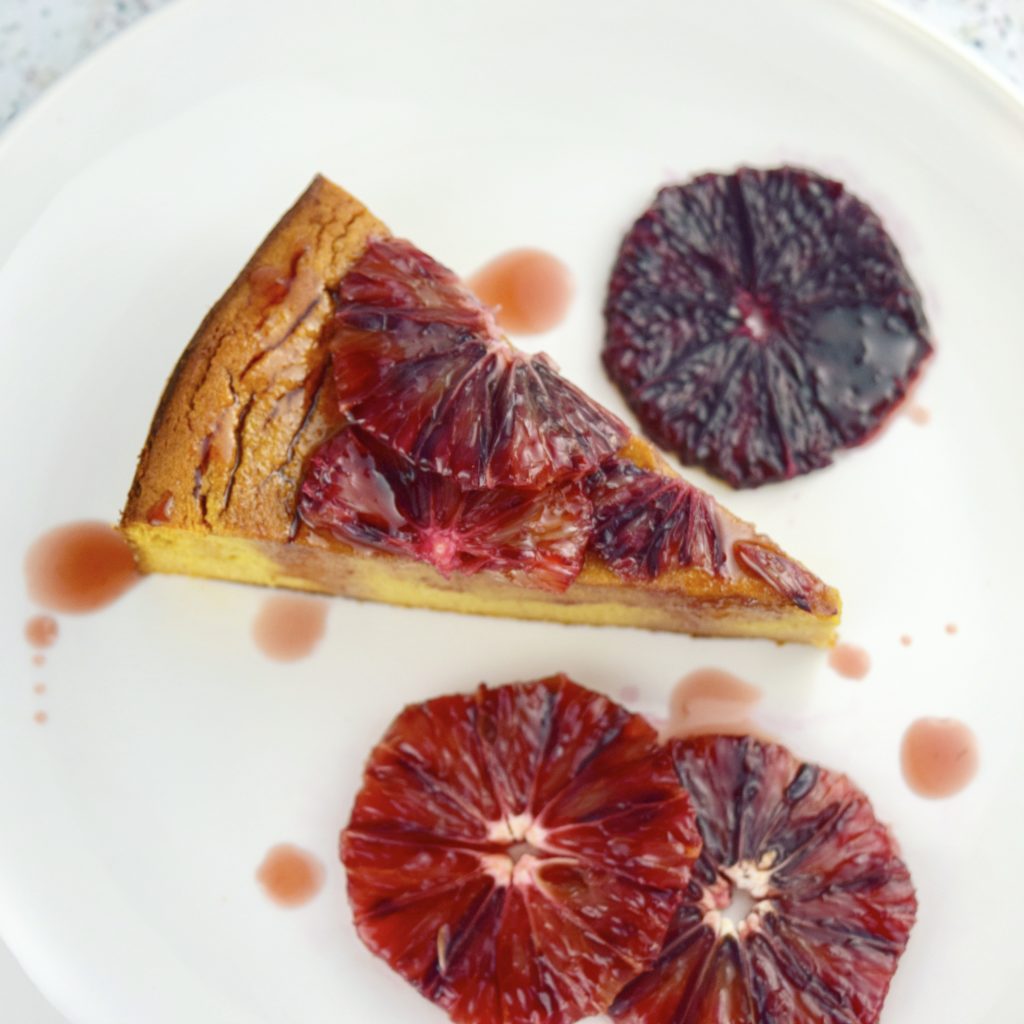
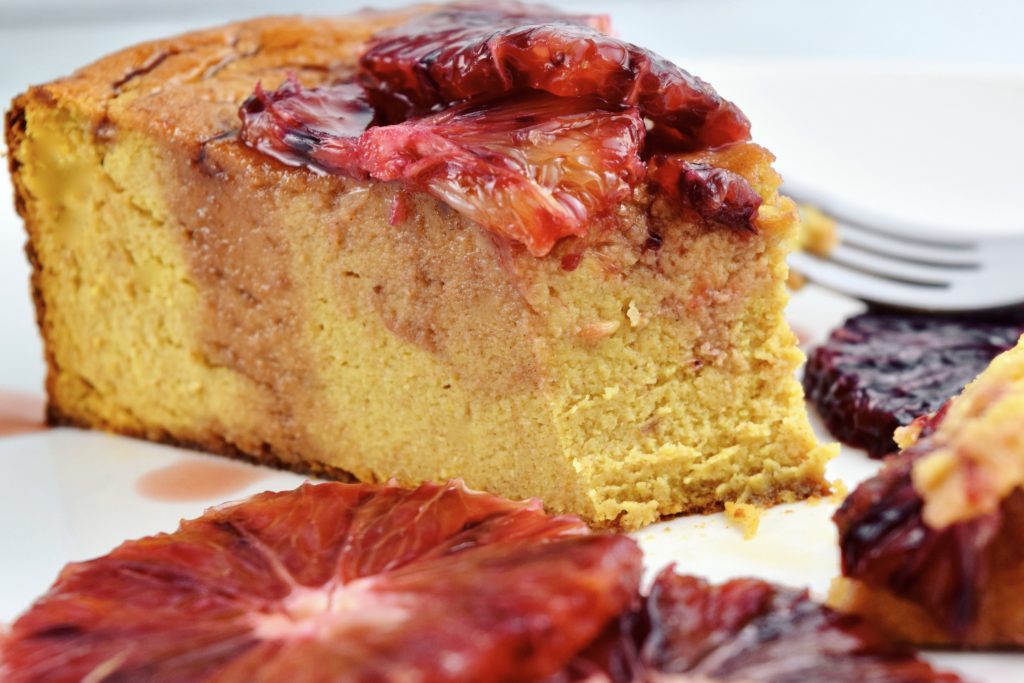


Can this cake be frozen?
Hi Patricia, it sure can. The syrup can also be made ahead of time and refrigerated in an airtight container. Bake, cool, and freeze the cake – I recommend wrapping it well in plastic and then a layer of heavy duty foil. Keep it wrapped and start the thaw in the refrigerator overnight, then transfer to the kitchen counter to thaw completely the day you plan to serve it. Brush on the syrup, apply the oranges, and enjoy!